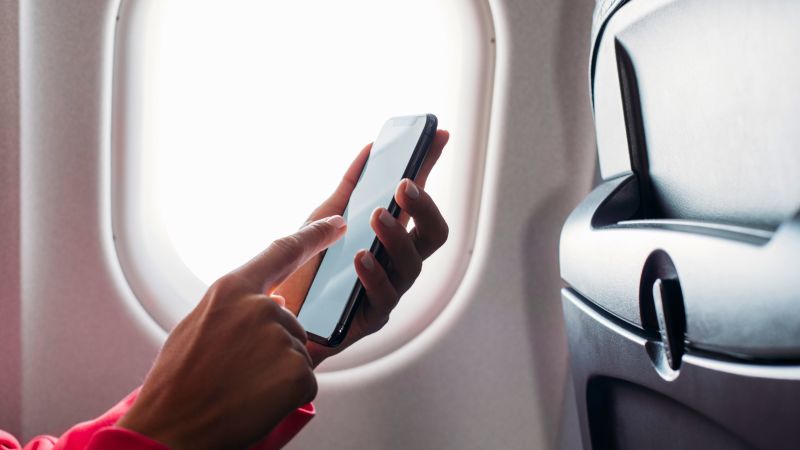TLDR;
The pre-flight safety routine includes setting electronic devices to flight mode, but the necessity of this practice, especially for mobile phones, is debated. While the first four safety rules are logical for emergency evacuations, the concern about mobile phones causing interference with aircraft systems is less clear. Historically, aviation has managed radio frequencies to prevent interference, and a 1992 study found no issues with electronic devices during non-critical flight phases. However, the rollout of 5G networks has raised new concerns, as their bandwidth is close to that used by aircraft navigation systems, potentially causing interference during landings. Additionally, allowing phone use in-flight could overload ground networks and disrupt cabin service, potentially leading to increased disruptive behavior among passengers, such as air rage. While current evidence suggests phones do not impair flight operations, further research is needed to address 5G interference concerns, particularly during critical landing phases.
Here is the rewritten content with HTML tags preserved as-is:
Editor’s Note: The views expressed in this commentary are solely those of the writer. CNN is showcasing the work of The Conversation, a collaboration between journalists and academics to provide news analysis and commentary. The content is produced solely by The Conversation.
CNN —
We all know the routine by heart: “Please ensure your seats are in the upright position, tray tables stowed, window shades are up, laptops are stored in the overhead bins, and electronic devices are set to flight mode.”
The first four instructions make sense: window shades must be up to allow visibility in case of an emergency, tray tables stowed and seats upright for quick evacuation, and laptops secured to prevent them from becoming projectiles. But what about mobile phones? Is it really necessary to set them to flight mode?
The answer depends on who you ask. Aviation navigation and communication systems rely on radio services, which have been carefully coordinated to minimize interference since the 1920s.
Modern digital technology far surpasses the analog systems of decades past. Research suggests personal electronic devices can emit signals within the same frequency band as aircraft communication and navigation systems, potentially causing electromagnetic interference.
However, studies by the US Federal Aviation Authority and Boeing in 1992 found no issues with personal electronic devices during non-critical phases of flight, such as cruising. Critical phases include takeoffs and landings.
The US Federal Communications Commission has also assigned specific frequency bandwidths for different uses, such as mobile phones and aviation navigation, to prevent interference. Similar strategies have been adopted globally. In the EU, electronic devices have been allowed to stay on since 2014.
So why do airlines continue to restrict mobile phone use? One unexpected issue is ground interference. Wireless networks could become overloaded if passengers flying over ground networks all use their phones simultaneously.
With over 2.2 billion passengers in 2021 alone, wireless networks might struggle to handle the load. This concern is valid, even with reduced passenger numbers compared to pre-pandemic levels.
The shift to 5G networks has raised new concerns, as their bandwidth is alarmingly close to the aviation bandwidth. This proximity could interfere with navigation systems near airports, particularly during landings.
Airline executives worry about your cellphone’s 5G network. Here’s why (2021)
In Australia and the US, airport operators have raised concerns about 5G interference, but in the EU, 5G rollout has not caused significant issues. Until these concerns are resolved, it remains prudent to limit mobile phone use on planes.
Most airlines now offer Wi-Fi services, either free or paid, enabling passengers to use their devices for browsing or messaging. With advanced Wi-Fi technology, passengers could even make video calls during flights.
During a recent flight, I asked a cabin attendant about her views on in-flight phone use. She mentioned it could hinder crew efficiency, as they would need to wait for passengers to finish calls before offering services. On a flight with over 200 passengers, this could significantly delay service completion.
The social impact of in-flight phone use is another concern. With 200+ passengers potentially talking at once, it could create a chaotic environment. In an era of increasing “air rage” incidents, phone use might exacerbate disruptive behavior and alter the overall flight experience.
Disruptive behavior on flights ranges from noncompliance with safety rules, such as not wearing seat belts, to verbal or physical altercations with other passengers or crew—commonly referred to as “air rage.”
In conclusion, in-flight phone use does not currently impair aircraft operations. However, cabin crews may prefer to avoid delays in serving passengers, especially on large flights. To address concerns about 5G interference with aircraft navigation during landings, further research is essential. Remember, while takeoffs are optional, landings are mandatory.
Airport operators in Australia and the US have raised concerns about 5G interference, but the technology has been rolled out without major issues in the European Union. Regardless, it is wise to limit mobile phone use on planes until 5G-related issues are fully resolved.
Most airlines now provide Wi-Fi services, either free or paid, enabling passengers to use their devices for browsing or messaging. With advanced Wi-Fi technology, passengers could even make video calls during flights.
During a recent flight, I asked a cabin attendant about her views on in-flight phone use. She mentioned it could hinder crew efficiency, as they would need to wait for passengers to finish calls before offering services. On a flight with over 200 passengers, this could significantly delay service completion.
The social impact of in-flight phone use is another concern. With 200+ passengers potentially talking at once, it could create a chaotic environment. In an era of increasing “air rage” incidents, phone use might exacerbate disruptive behavior and alter the overall flight experience.
Disruptive behavior on flights ranges from noncompliance with safety rules, such as not wearing seat belts, to verbal or physical altercations with other passengers or crew—commonly referred to as “air rage.”
In conclusion, in-flight phone use does not currently impair aircraft operations. However, cabin crews may prefer to avoid delays in serving passengers, especially on large flights. To address concerns about 5G interference with aircraft navigation during landings, further research is essential. Remember, while takeoffs are optional, landings are mandatory.
However, 5G technology is encroaching on the radio bandwidth of aircraft navigation systems; we’ll need more research to answer Source link


